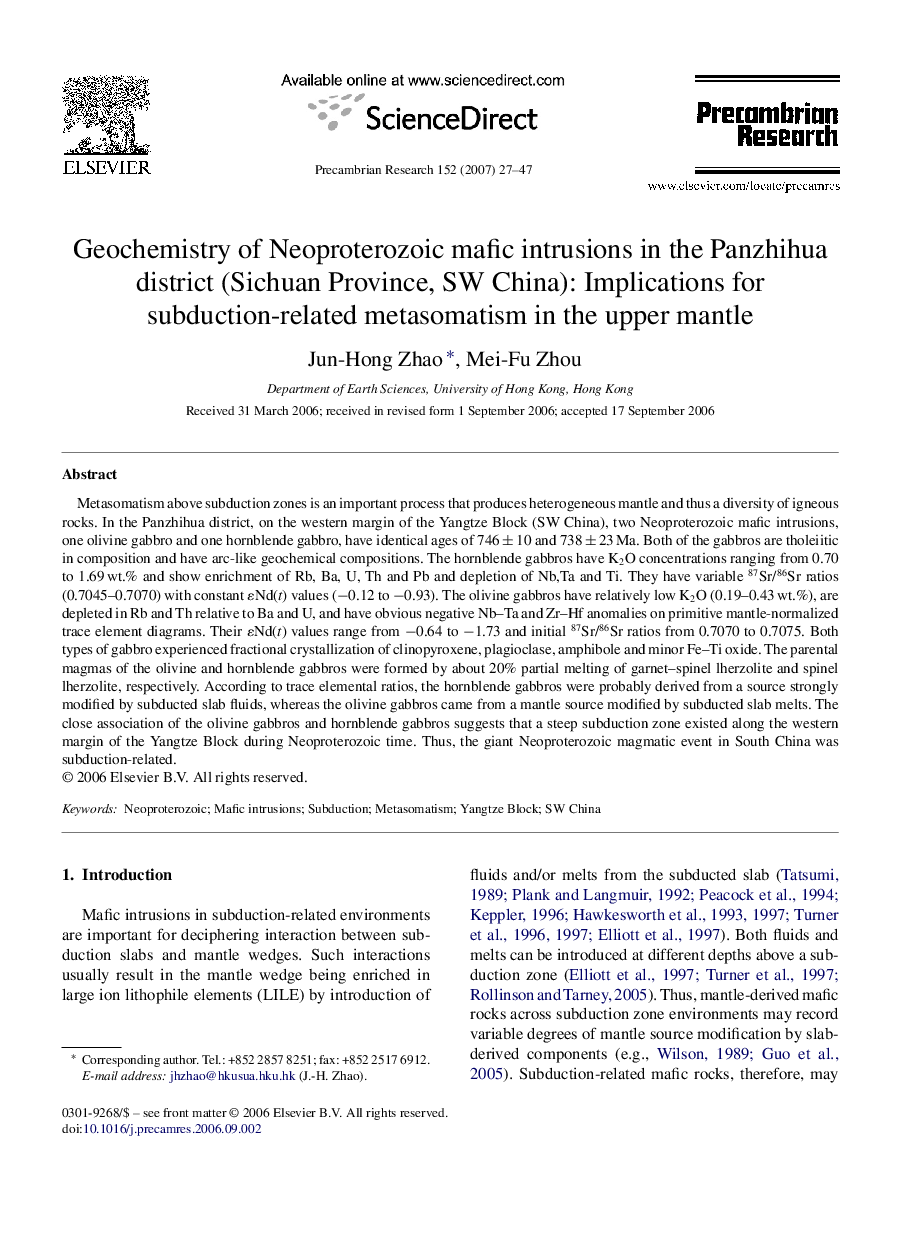| Article ID | Journal | Published Year | Pages | File Type |
|---|---|---|---|---|
| 4724552 | Precambrian Research | 2007 | 21 Pages |
Metasomatism above subduction zones is an important process that produces heterogeneous mantle and thus a diversity of igneous rocks. In the Panzhihua district, on the western margin of the Yangtze Block (SW China), two Neoproterozoic mafic intrusions, one olivine gabbro and one hornblende gabbro, have identical ages of 746 ± 10 and 738 ± 23 Ma. Both of the gabbros are tholeiitic in composition and have arc-like geochemical compositions. The hornblende gabbros have K2O concentrations ranging from 0.70 to 1.69 wt.% and show enrichment of Rb, Ba, U, Th and Pb and depletion of Nb,Ta and Ti. They have variable 87Sr/86Sr ratios (0.7045–0.7070) with constant ɛNd(t) values (−0.12 to −0.93). The olivine gabbros have relatively low K2O (0.19–0.43 wt.%), are depleted in Rb and Th relative to Ba and U, and have obvious negative Nb–Ta and Zr–Hf anomalies on primitive mantle-normalized trace element diagrams. Their ɛNd(t) values range from −0.64 to −1.73 and initial 87Sr/86Sr ratios from 0.7070 to 0.7075. Both types of gabbro experienced fractional crystallization of clinopyroxene, plagioclase, amphibole and minor Fe–Ti oxide. The parental magmas of the olivine and hornblende gabbros were formed by about 20% partial melting of garnet–spinel lherzolite and spinel lherzolite, respectively. According to trace elemental ratios, the hornblende gabbros were probably derived from a source strongly modified by subducted slab fluids, whereas the olivine gabbros came from a mantle source modified by subducted slab melts. The close association of the olivine gabbros and hornblende gabbros suggests that a steep subduction zone existed along the western margin of the Yangtze Block during Neoproterozoic time. Thus, the giant Neoproterozoic magmatic event in South China was subduction-related.
